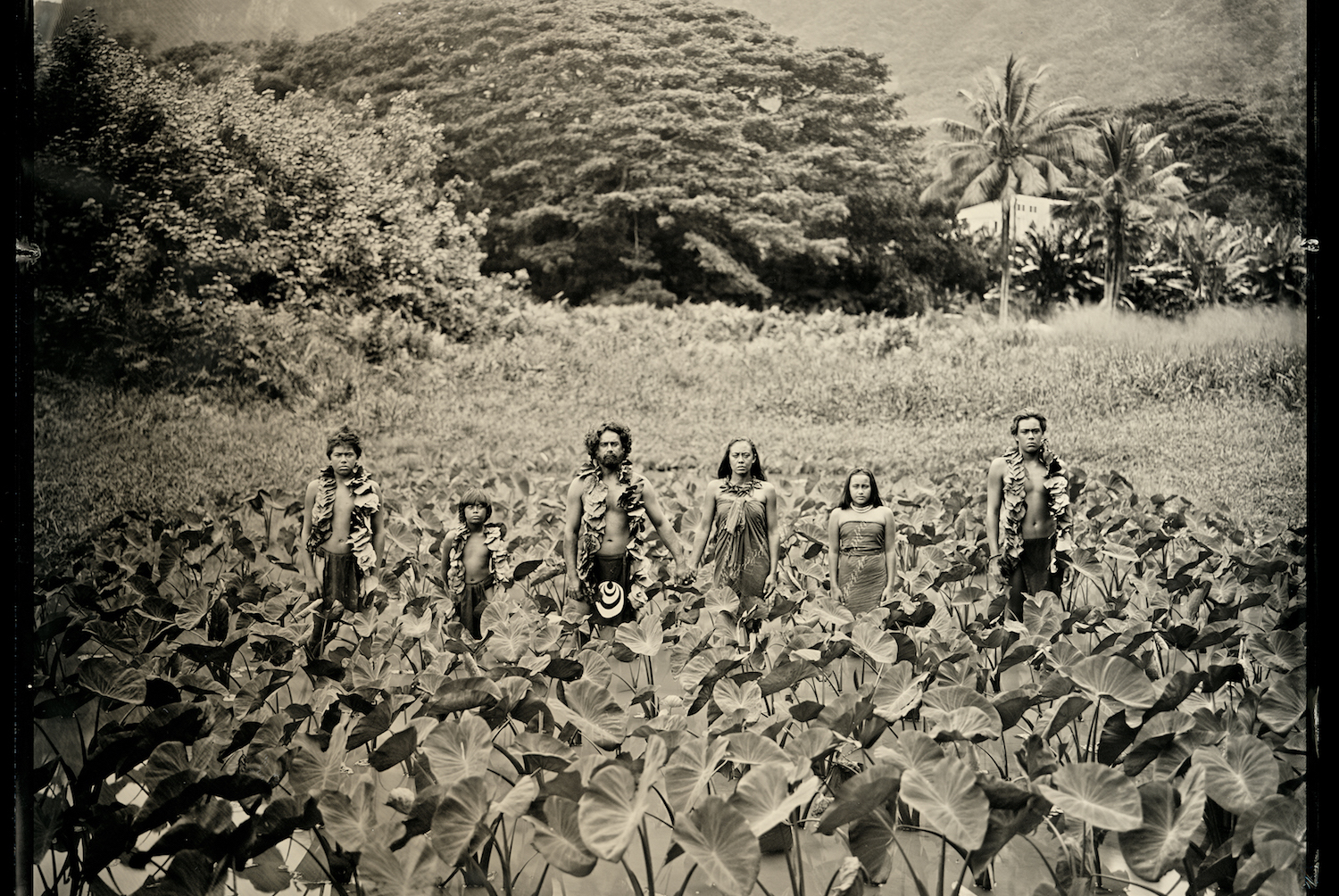Through his mastery of the laborious wet-plate collodion process, Hawaiian photographer Kenyatta Kelechi memorializes modern-day Hawai‘i.
Contemporary artist Kenyatta Kelechi comments on the endurance of Hawaiian culture using a wet-plate chemical process invented in England in the mid-1800s and the preferred method of image-making among itinerant photographers through the early 1900s. Wet-plate technology enabled artists to capture a finely detailed picture in open air, rather than in a studio, to create a stable likeness from which numerous reproductions could be printed, traits that lent to its popularity.
During the time of wet-plate introduction, Hawai‘i’s port cities linked itinerant artists traveling across the Pacific en route to Asia or North America, resulting in a proliferation of wet-plate photographs depicting Hawai‘i’s people and places. Kelechi works in wet-plate photography for precisely this reason. Many of the earliest photographs of Hawaiian people and cultural practices, such as hula, were made using a wet-plate process like ambrotype or tintype.
Kelechi utilizes the medium of his artistic predecessors as a pathway to understanding his own Hawaiian identity by researching the existing image troves, but altering the methodology associated with early photographers in significant ways. His approach intentionally subverts the problematic history tied to 19th-century photographic portraiture.
Mechanism of Colonization
The camera, perhaps more so than any other artistic tool, has been considered a mechanism of colonization because of its association with exploitive 19th- and 20th-century anthropological projects, in which artists and researchers financially capitalized on staged and artificially historicized images of Native peoples.
Those images, many of them wet-plates, circulated misrepresenations made by non-native photographers of native peoples, reinforcing racialized stereotypes while situating Native people in the past through a romanticized black-and-white image.
The people in the photos are so process-based and have committed their life to refining their practice. I would feel awkward, almost like I am robbing them, if I were to produce a digital image.


Unlike those 19th-century itinerant artists, who were not from the communities they photographed, Kelechi’s Hawaiian geneology connects him to Moloka‘i and O‘ahu. His compositions often feature groupings of people instead of a solitary figure, a subtle departure that moves away from historical wet-plate portraiture aesthetics, which typically featured a single individual, to show the perserverance and abundance of cultural activity.
With Kelechi, decisions about attire are left to those being photographed—a deliberate gesture that returns agency to the sitter—and people are pictured in the environs of their 21st-century daily life. Part chemistry, creativity, and still-documentary, the final images surface after Kelechi has refined his emulsion recipe to produce the desired tonality in the picture and developed a relationship with the people he photographs.
Wet-Plate Process
The wet-plate process is laborious and technically involved when compared to its digital counterpart. Regardless, it remains Kelechi’s medium of choice.
He explains: “The people in the photos are so process-based and have committed their life to refining their practice. I would feel awkward, almost like I am robbing them, if I were to produce a digital image. It is not a fair reciprocity. The time-intensive and methodical nature of the wet-plate closely parallels the approach of those in the pictures.”
Kelechi aligns different forms of knowledge to make wet-plate photography an expression of gratitude to those in the photo, and a record of contemporary culture in Hawaiʻi.




Healoha Johnston is a curator of Asian Pacific American women’s cultural history at the Smithsonian Institution. Her research interests include exploring connections between historic visual culture and contemporary art with a particular focus on the socio-political underpinnings that inform those relationships. As an art historian, Johnston has curatorial experience working in contemporary art galleries, arts and cultures nonprofit organizations, NOAA’s Pacific National Monument program, and the Honolulu Museum of Art. She lives in Kaiwiki, Hawai‘i.



